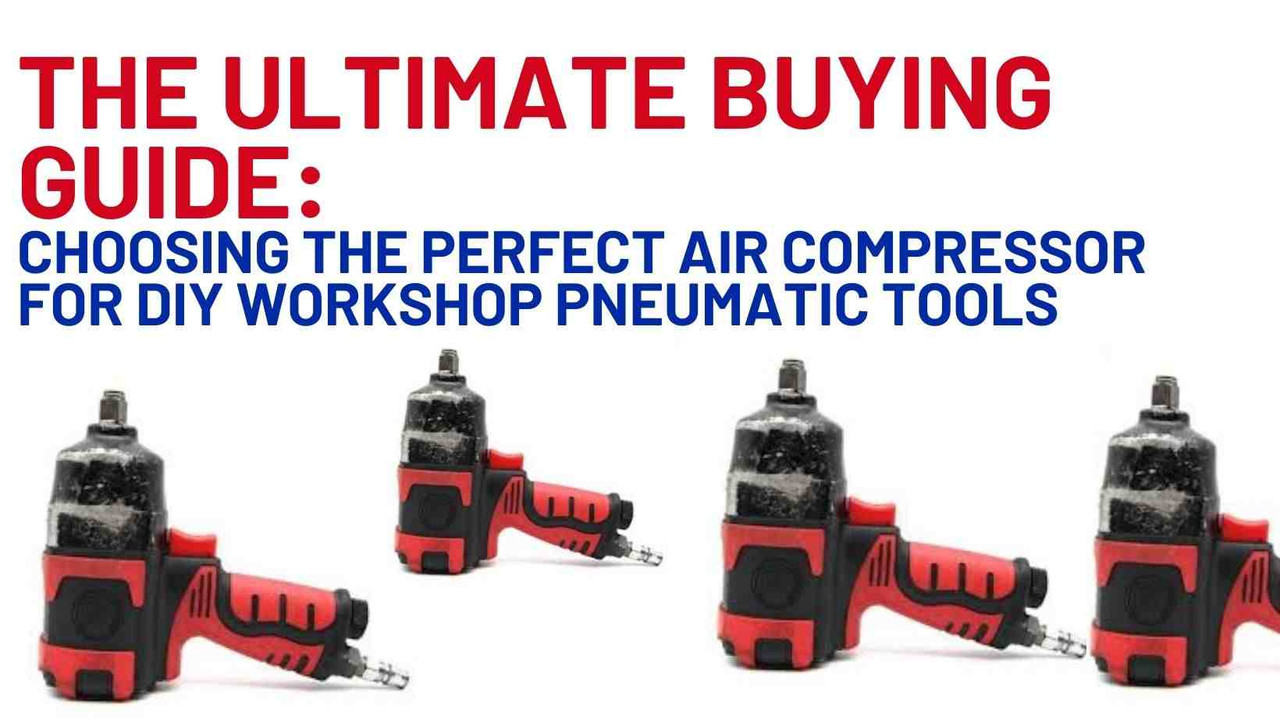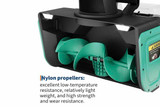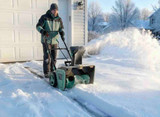The Ultimate Buying Guide: Choosing the Perfect Air Compressor for DIY Workshop Pneumatic Tools
Choosing the Perfect Air Compressor for DIY Workshop Pneumatic Tools
For DIYers, the air compressor emerges as an unsung hero, playing an instrumental role in breathing life into pneumatic tools. Within the confines of a workshop, the hum of an air compressor signifies more than just machinery at work; it's the sound of creativity and precision. Choosing the perfect compressor isn't merely about powering your tools—it's about enhancing their performance, ensuring longevity, and achieving impeccable results with each project.
Understanding Air Compressors
Before diving into the specifics, it's crucial to understand the backbone of what you're investing in. At its core, an air compressor is a machine designed to convert power (usually from an electric motor) into potential energy stored as compressed or pressurized air. This stored air is then used to power various tools and equipment.
When it comes to types, air compressors are not one-size-fits-all. They come in various designs, each tailored for specific applications:
- Piston (or Reciprocating) Compressors are the most common for DIY workshops. They work by drawing air in and compressing it with a piston and cylinder, then storing it in a tank.
- Rotary Screw Compressors: Ideal for continuous use, these compressors use two rotors (screws) to compress air. They're typically found in larger, industrial settings.
- Centrifugal Compressors: Operating at high speeds, these compressors are for large-scale operations, using dynamic compression driven by a rotating impeller.
Determine Your Needs
Before you find your perfect air compressor, you must identify the needs of your DIY workshop. Start by listing the pneumatic tools you own or plan to purchase. Each tool will have its specific requirements in terms of airflow and pressure.
Next, determine the average air consumption of your tools, typically measured in CFM (Cubic Feet per Minute). For instance, a paint sprayer might require more CFM than a brad nailer. Additionally, note the PSI (Pounds per Square Inch) each tool needs. Most air tools require 70 to 90 PSI, but always check the manufacturer's specifications.
Key Specifications to Consider
Once you've gauged your needs, focus on the specs. Here's what to consider:
- CFM (Cubic Feet per Minute) determines how much air your compressor can deliver. Choosing a compressor whose CFM rating exceeds your tools' requirements is paramount.
- PSI (Pounds per Square Inch): While many DIY tools operate between 70-90 PSI, opting for a compressor that can exceed this range, ensuring optimum performance is advisable.
- Tank Size: The tank stores the compressed air, determining how long you can operate your tools before the compressor needs to kick back in. For intermittent tools like nailers, a smaller tank might suffice. For continuous operations, like sanding, a larger tank is beneficial.
- Duty Cycle: Expressed in percentages, this indicates how long a compressor can run in 10 minutes without overheating. For example, a 50% duty cycle means the compressor can run for 5 minutes and then needs a 5-minute break.
With this foundation, you're well on your way to making an informed decision, ensuring that your DIY endeavors shine and stand the test of time. As we delve deeper into this guide, we'll explore more facets of air compressors, ensuring that you're equipped with all the knowledge needed to make the perfect choice for your workshop.
Power Sources & Portability
Delving into the heart of the machine, the power source becomes the core determinant of how your compressor operates.
-
Electric vs. Gas-powered Compressors:
- Electric Compressors: These are the most common for DIY workshops. They're cleaner, require less maintenance, and are suitable for indoor use as they don't emit fumes. They typically run on standard household voltage, so setting up is quite straightforward.
- Gas-powered Compressors: More powerful and suitable for outdoor or job sites without easy access to electricity. While they're generally more robust, they come with the caveat of producing exhaust fumes, making them unsuitable for confined spaces.
-
Stationary vs. Portable Designs:
- Stationary Compressors: These are large, designed for heavy-duty tasks and stay in one spot in the workshop. They come with bigger tanks, meaning fewer stops and starts, which extends the machine's life.
- Portable Compressors: Lighter and easy to move around, these are ideal for tasks that require mobility. While they may not have the extensive capacity of stationary ones, modern advancements ensure they pack quite a punch.
Features to Look For
Beyond power and size, the efficiency and convenience of an air compressor lie in its features.
- Adjustable Pressure Regulator: This allows you to adjust the air pressure to match specific tools, ensuring versatility and preventing potential tool damage.
- Thermal Overload Protection: A must-have feature that shuts the compressor off if it overheats, safeguarding the motor and increasing the lifespan.
- Oil-free vs. Lubricated:
- Oil-free Compressors: Require less maintenance and are cleaner, as they don’t spew oil-mist. They're also lighter and perfect for short-term DIY projects.
- Lubricated Compressors: Although they need regular oil checks and changes, they tend to be quieter and last longer due to reduced wear and tear.
- Easy Drain Systems: Given that compressors condense humidity from the air, a good drainage system is essential. Look for compressors with easy-to-access drain valves.
Safety & Maintenance
No piece of machinery is worth its weight without stringent safety protocols.
-
Recommended Safety Features:
- Safety Relief Valve: This mechanism ensures the pressure within the tank doesn't exceed safe levels.
- Automatic Shutoff: In cases where the motor gets too hot or has too much pressure, the compressor automatically turns off.
- Secure Hose Connections: To prevent accidental disconnections, which can be dangerous.
-
Routine Checks and Maintenance Tips:
- Daily: Check for oil leaks and ensure the oil level is adequate (for lubricated models).
- Weekly: Drain moisture from the tank. Inspect air hoses for wear and tear.
- Monthly: Check the safety relief valve. Tighten nuts and bolts as needed.
- Annually: Replace the air filter and check the condition of belts, if applicable.
Armed with this knowledge, the maze of compressors and their features becomes less daunting. The right compressor powers your tools and ensures that your DIY projects get the seamless finish they deserve. In the subsequent sections, we'll delve deeper, allowing you to tailor your choice even further, ensuring your DIY workshop becomes the beacon of efficiency and creativity.
Noise Levels & Placement
An often overlooked yet crucial factor is the noise level produced by air compressors.
- Understanding Decibel (dB) Ratings: The noise level of an air compressor is measured in decibels (dB). Most compressors for DIY workshops will have a rating between 60 to 90 dB. For perspective, normal conversation is around 60 dB, while a lawnmower is about 85-90 dB.
- Tips on Placing Your Compressor:
- Place it on rubber mounts or anti-vibration pads to reduce noise.
- If possible, keep the compressor in a separate or insulated room.
- Ensure adequate ventilation regardless of where it's placed.
Budget & Brands
Quality comes at a price, but understanding the market ensures you get value for money.
- Price Ranges: Entry-level models might start as low as $100, mid-range models can hover around $500, and high-end models can exceed $1000, especially those with advanced features and larger capacities.
- Trusted Brands: Brands like DeWalt, Makita, and Husky have garnered trust. Their flagship models often become benchmarks for reliability and performance.
Environmental & Energy Efficiency
Being eco-conscious is not just a trend but a responsibility.
- The Importance of Energy-Efficient Models: They consume less power, reducing electricity bills and a smaller carbon footprint.
- Environmental Considerations: When disposing of old compressors or parts, ensure they're recycled or disposed of in an environmentally friendly manner.
Conclusion & Final Thoughts
Air compressors are the backbone of a DIY workshop. Making an informed choice ensures your tools operate at their peak and your projects come to life seamlessly. Prioritizing quality, safety, and environmental considerations are not just smart buying decisions but also investments in the future.
Recommendations & Reviews
For those still uncertain about the right model, Tend Industrial Supplies has curated a list of handpicked models that cater to different needs and budgets. Dive deeper into detailed reviews and explore purchase options on tendsupplies.com. Remember, the perfect air compressor for you marries your workshop needs with quality, durability, and the right price point.
For more information or personalized advice, reach out to the experts at Tend Industrial Supplies via sales@tendsupplies.com. Leap efficiency and precision today!









